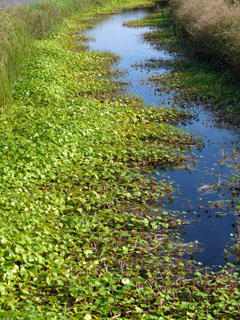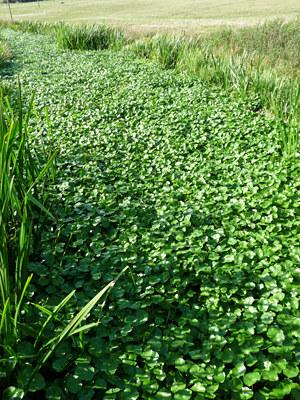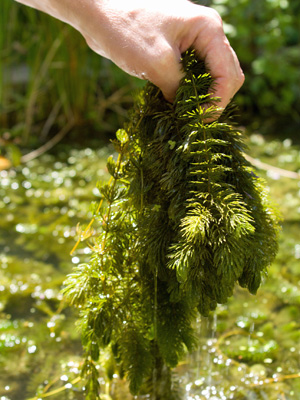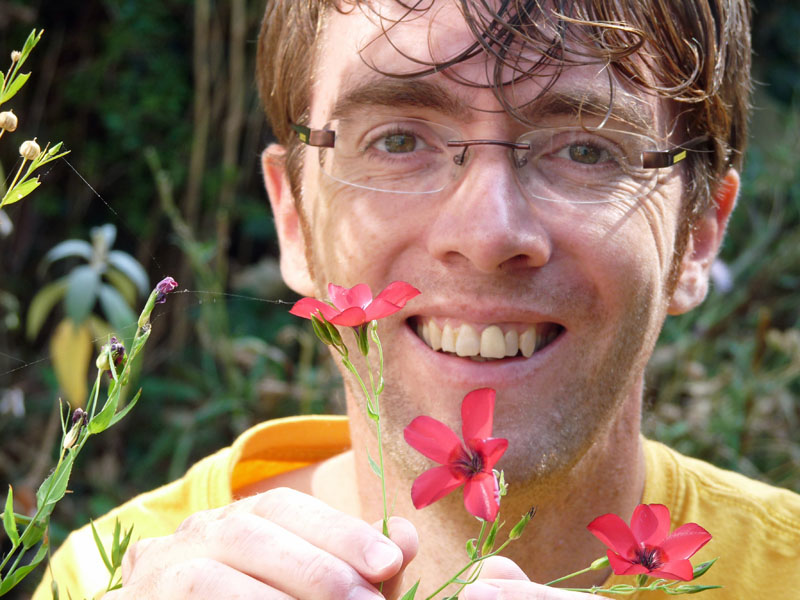March 2018
I love growing plants. I'm what is known as a plantaholic.
Like millions of gardeners across the country, many of the plants I grow aren't native, either to Britain or to the area of the country I live in. So I grow dahlias from Mexico, Echinacea from North America, lavender from southern Europe, Verbena bonariensis from South America, Agapanthus from South Africa, Wisteria from China and Acacia from Australia.
I grow them because they are beautiful, and because all have value to various types of wildlife in the UK (although when it comes to the Dahlias it has to be the single flowers if bees and other pollinators are to gain any value from them rather than the heavily cultivated varieties which are little more than a ball of petals).
However, what is always in the back of my mind is the need to be wary of the potential impact that some non-native plants may have on native flora. With so much attention focused – rightly – on the impacts that Invasive Non-native Species (INNS) can have on native wildlife and habitats, there is a need for great care when it comes to growing non-native garden plants.
In particular, the one group that has proved to include particularly invasive species are non-native pond plants. Brought in to embellish garden ponds and aquariums, their perniciousness comes in part from to the speed with which they can grow, but also the ease with which they can be transported long distances along waterways.
I have seen for myself the devastation it can cause to at a place near me here in Sussex called the Pevensey Levels, an internationally important wetland. There, a plant called Floating Pennywort went from a standing start to choking 30 miles of ditches in little more than a decade.

It is a brute; freed from the natural controls of its homeland, it can grow 20cm a day, blocking out the sunlight from the ditches and its wildlife and muscling out native plants. Look what it can do!

Another plant called, variously, New Zealand Pigmyweed and Australian Swamp Stonecrop has proved as difficult to control as its names are to remember. It creates mats of tiny succulent leaves growing on waterside mud and spreading out across the water. It can propagate from the tiniest of pieces.
But what has that got to do with your garden pond, you might be asking? Well, one problem is that we all hoick pondweed out of our ponds each year as it grows. Maybe we put it on the compost heap or in the greenbin, but it doesn't take much for a tiny piece to make it into a drain or a ditch, and then it's laughing!
Another problem is that many of us don't actually know whether our pond plants are native or not, for they can be rather tricky to identify. Telling your native hornworts (below) and water-milfoils from non-native Canadian Pondweed and the various Elodea pondweeds isn't a skill you tend to hone very often.

It is why RSPB and other Link members are are working with the national Non-Native Species Secretariat to promote the Be Plant Wise campaign as part of Invasive Species Week (23-29 March 2018).
I particularly like the Know what you Grow pages, which lead to lots of information and identification sheets about some of the worst offending plants.
The website also gives you advice on what to do if you find invasive aquatic plants in your pond, including how to compost them.
One piece of advice I like to give is not to share pond plants with friends and relatives unless you are really sure you know what the plant is and that your pond doesn't have non-native invasive plants in it.
I do realise that dealing with a rogue plant in your pond can seem a right faff. However, when you think that the biggest cause of extinctions of wildlife in recent times is us – Mankind – moving invasive wildlife around the globe to places it otherwise would never reach, you realise that we've just got to do it.
Being Plant Wise is the part we gardeners and homeowners can all play in stemming the tide.
Adrian Thomas, Project Manager at RSPB
Follow RSPB on Twitter @Natures_Voice
Invasive Species Week 2018 runs from 23 - 29 March - check out all the action at #InvasivesWeek
The opinions expressed in this blog are the author's and not necessarily those of the wider Link membership.




Latest Blog Posts